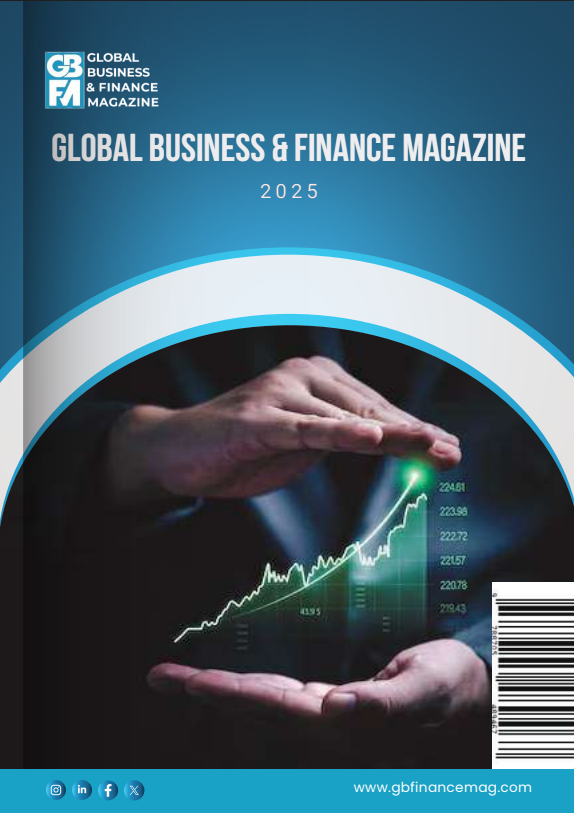Central banks have increasingly engaged with climate-related topics in their public communication, but little is known about the drivers and effects of this shift. This column presents a comprehensive analysis of climate-related central bank communication using a novel dataset of over 35,000 speeches from 131 central banks spanning 1986-2023. The authors find that climate communication (1) follows two distinct narratives (‘green finance’ versus ‘climate-related risks’); (2) is driven more by institutional factors than climate exposure; and (3) significantly affects stock market returns, with greener firms outperforming when central banks focus more on climate issues.
Once narrowly focused on price stability and financial supervision, central banks now regularly discuss climate-related challenges, promote green finance initiatives, and examine the broader implications of decarbonisation for financial markets. This evolution raises fundamental questions about the changing nature of central banking (Landau and Brunnermeier 2020). Indeed, research has highlighted the trade-offs central banks would face if they were to start tackling climate change, as climate instruments overlap with those already used in their monetary and macroprudential mandates (Russo and Masciandaro 2022). At the same time, empirical evidence shows that central banks responding to climate-related shocks may not be such a new development, with European central banks historically having been responsive to high temperature shocks (Baleyte et al. 2024).
Despite this growing body of research, key empirical questions remain unanswered. When did central banks’ climate awakening actually begin? Why do some institutions communicate far more actively about climate issues than others? How do central banks frame their climate engagement within existing mandates? And crucially, how do financial markets respond to this expanding scope of central bank communication? We address these questions in a recent paper (Campiglio et al. 2025), revealing surprising patterns in the origins, drivers, and market effects of climate-related central bank communication.
Central banks’ climate awakening
To explore when and how central bank communication started to tackle climate change, we first construct a novel dataset of central banker speeches. The CBS dataset was created through systematic web-scraping of central bank websites and targeted archival work. The dataset contains 35,487 unique speeches from 131 central banks over 37 years (1986–2023), representing an 89% increase in speech coverage compared to the widely used Bank for International Settlements repository. Importantly, it includes 5,347 machine-translated speeches that were not originally given in English, enabling us to provide a more complete picture of central bank communication worldwide. The dataset was also completed to include the Gender and Position of each speaker across time, based on publicly available information.
Figure 1 CBS dataset


What emerges from this comprehensive dataset is a more complete picture of central bank climate communication that challenges conventional timelines. The emergence of central banks’ interest for climate-related issues is traditionally traced back to Mark Carney’s 2015 speech. In this intervention, the former Governor of the Bank of England and head of the Financial Stability Board warned against the “tragedy of the horizon” – a form of market myopia that prevents financial institutions from seeing long-term climate risks due to their short-term focus. He identified two main categories of material climate risks: physical risks from the direct impacts of climate change (extreme weather events, sea-level rise), and transition risks from the economic adjustments required for decarbonisation (stranded assets, policy changes).
This speech undoubtedly marked a turning point, inspiring many central banks in developed countries to follow his lead and start communicating about the issue in the following months. However, Carney was not the first central banker to address climate change in public communication. Before western central banks entered the discussion, Southeast Asian institutions had already extensively addressed climate topics in their communication. These early interventions were remarkably prescient: in 2000, the Hong Kong Monetary Authority was already discussing climate-related financial risks, while the Reserve Bank of New Zealand addressed the inflationary implications of carbon pricing in 2008. The Bank of Bangladesh repeatedly highlighted physical climate impacts in 2012-13, years before these became mainstream concerns in central banking circles.
Figure 2 Climate speeches worldwide


Two climate narratives: Promotional and prudential
Climate issues have become increasingly prominent in central bank communication in recent years. This growing attention, however, takes distinctly different forms across speeches. Using structural topic modelling, we uncover two distinct climate narratives. The first narrative, which we term ‘green finance’, emphasises market opportunities, sustainable development potential, and the financial innovations able to steer the low-carbon transition. The second narrative centres on ‘climate-related risks’, examining threats to financial stability, physical risks from extreme weather events, and transition risks from policy changes and technological shifts. These two narratives echo the tension between ‘promotional’ and ‘prudential’ approaches, each reflecting a different philosophy about whether central banks should actively steer financial flows towards green activities or maintain neutrality by simply warning against climate-related risks (Bartholomew and Diggle 2021).
While the prudential ‘climate-related risks’ narrative indeed gained broader traction worldwide after Carney’s speech in 2015, important differences persist across institutions in their policy strategies (Baer et al. 2021). This appears to be reflected in central bank communication too. While western central banks like the ECB, the Bank of England, or the Federal Reserve predominantly focus on climate-related risks, other institutions like the central banks of Singapore, China, or Bangladesh rely primarily on green finance narratives.
Figure 3 Climate narratives per country


The drivers of climate communication
If the timing and framing of central banks communication about climate change varies, what may explain such variation? To answer this question, we implement a Poisson pseudo-maximum likelihood (PPML) regression analysis with country and yearly fixed effects. For each central bank year observation, we explore in four different regressions how the salience of the green finance topic (1), of climate-related risks (2), or of climate-related issues in general (3 and 4) correlate with a set of potential drivers.
Surprisingly, neither physical nor transition risk exposure correlates with increased climate communication, no matter the measure of climate salience. Instead, institutional factors emerge as key drivers across all specifications. Central banks with broader supervisory responsibilities are significantly more likely to discuss climate issues, particularly through the ‘climate-related risks’ narrative. Membership in the Network for Greening the Financial System (NGFS) is also strongly associated with greater climate attention across all measures. These findings suggest that central banks’ climate communication strategies are primarily determined by their institutional framework and participation in epistemic communities rather than their country’s direct exposure to climate risks.
Warning words’ financial impact
Central bank communication is well known to affect financial markets. But do climate-focused speeches have similar effects? Can green communication by central bankers trigger capital reallocation to support the low-carbon transition? Using US equity data, we construct portfolios that go long in ‘green’ firms and short in ‘dirty’ ones. We show that such ‘green minus dirty’ portfolios generate positive returns on days when the Federal Reserve’s communication has a stronger climate focus. This effect is particularly pronounced when communication emphasizes climate-related risks rather than green finance opportunities, and when the portfolio is constructed with firms at the extremes of environmental performance distribution (10th versus 90th percentiles).
To test whether these findings hold more broadly, we conduct a granular firm-level analysis across 41 countries, examining how individual stock returns respond to climate communication from their domestic central bank. When central banks increase their focus on climate issues, firms with better environmental performance significantly outperform their peers. The economic magnitude is substantial: a ‘dirty’ firm with environmental scores one standard deviation below average experiences 1.42% lower returns compared to a firm one standard deviation above average when climate communication is at mean levels. These effects are robust across different measures of environmental performance and various empirical specifications, including stringent country-industry-date fixed effects. Notably, we find limited evidence of international spillovers, suggesting that markets primarily respond to climate communication from their domestic central bank.
Conclusion
Our research provides the first comprehensive analysis exploring the diversity of central banks’ climate communication, its drivers, and its financial consequences (Campiglio et al. 2025). We offer three main contributions. First, our novel dataset of over 35,000 speeches, which we make freely available, significantly expands the empirical foundation for studying central bank communication. Second, we show that central banks’ engagement with climate issues predates conventional narratives and varies systematically with institutional contexts rather than climate exposure. Third, we demonstrate that these ‘warning words’ materially influence market behaviour, suggesting that central bank communication can help facilitate the transition to a low-carbon economy.
Beyond these immediate findings, our dataset opens numerous avenues for future research into how central banks communicate about emerging challenges, from digitalisation to inequality. As central banks continue to evolve, we hope our work provides a foundation for understanding how these crucial institutions communicate and influence economic behaviour.
Source : VOXeu



































































